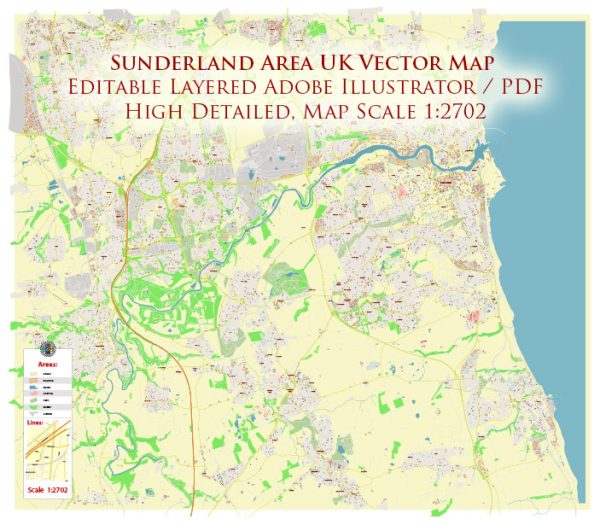The Sunderland area, located in the northeast of England, is a diverse and ecologically significant region characterized by a range of habitats and ecosystems. The ecological description of the Sunderland area can be broken down into several key components:
- Coastal Ecosystems: Sunderland’s proximity to the North Sea makes its coastline an important ecological feature. Coastal areas include sandy and rocky shores, salt marshes, and dunes. These areas support various bird species, including gulls, waders, and seabirds. Seal populations can also be found along the coast.
- Rivers and Wetlands: The region is intersected by rivers and streams, with the River Wear being the most prominent. These waterways provide habitats for fish, waterfowl, and wetland species. Local wetlands, such as Washington Wildfowl Park, support diverse birdlife and wetland vegetation.
- Woodlands: Sunderland has pockets of woodlands and forests, including Herrington Country Park and Hylton Dene, where you can find a mix of native and planted trees. These woodlands are home to various bird species and small mammals.
- Grasslands and Meadows: Grasslands and meadows are scattered throughout the area, supporting a variety of plant species and insects. These habitats are vital for pollinators and provide foraging opportunities for small mammals and birds.
- Urban Green Spaces: Sunderland’s urban areas feature parks and green spaces, contributing to the overall ecological diversity. These areas offer opportunities for recreational activities and provide refuge for urban wildlife such as squirrels, foxes, and various bird species.
- Conservation Areas: The Sunderland area includes several protected nature reserves and Sites of Special Scientific Interest (SSSIs). These areas are crucial for preserving rare and endangered species, including birdlife and unique plant species.
- Wildlife: Common wildlife species in the Sunderland area include various bird species, such as herons, kestrels, and blackbirds. Mammals like red foxes, rabbits, and hedgehogs can also be found. Additionally, the waters off the Sunderland coast are home to various fish species.
- Environmental Challenges: Like many urban areas, Sunderland faces environmental challenges such as habitat loss, pollution, and invasive species. Conservation efforts, local organizations, and government initiatives aim to address these challenges and protect the region’s ecological diversity.
The Sunderland area’s ecological landscape is influenced by its coastal location, rivers, and urbanization. Efforts to protect and restore its natural habitats and biodiversity contribute to the region’s overall ecological health and well-being.


 Author: Kirill Shrayber, Ph.D.
Author: Kirill Shrayber, Ph.D.